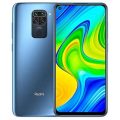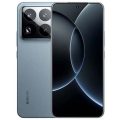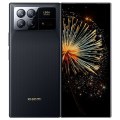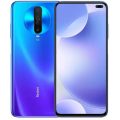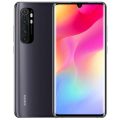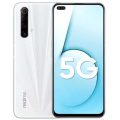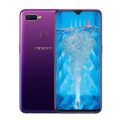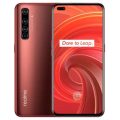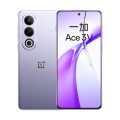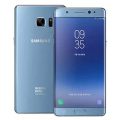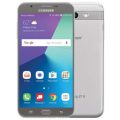Xiaomi 15
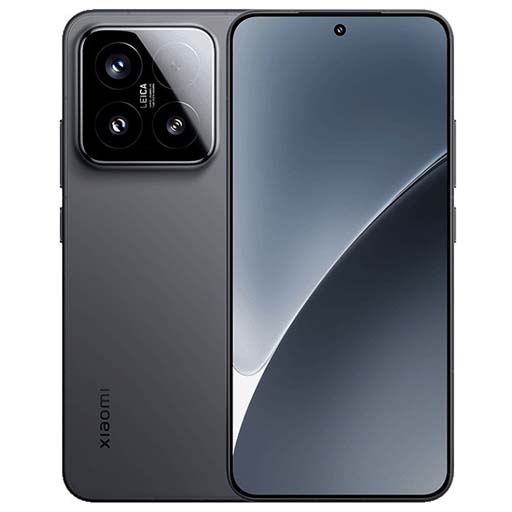

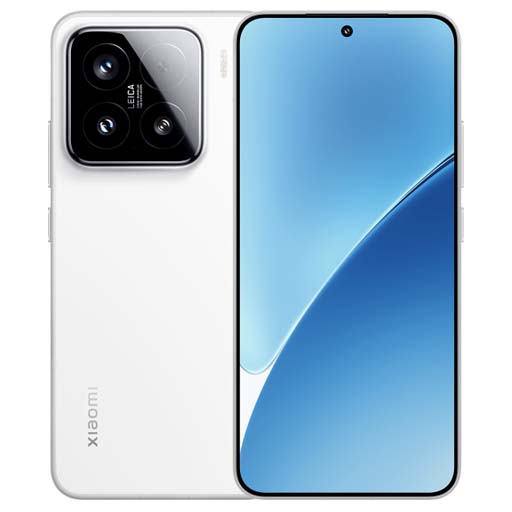
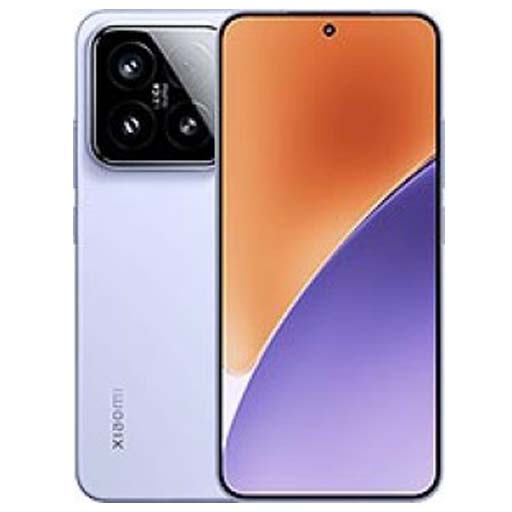
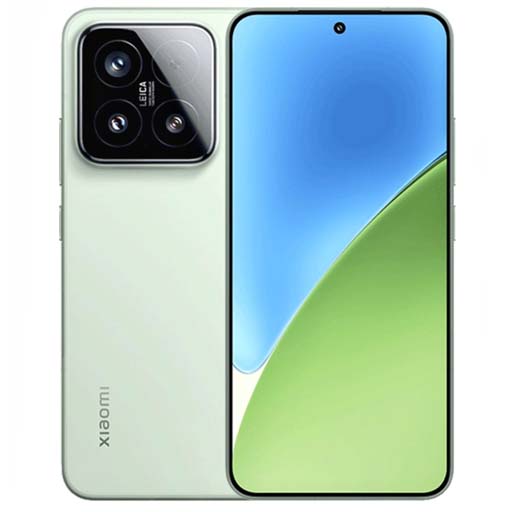
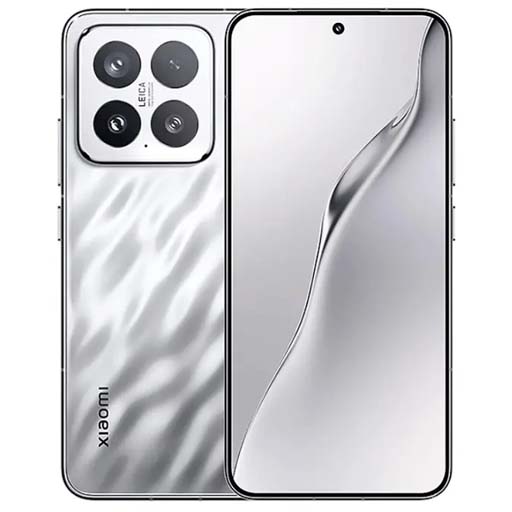

-
Released: 2024, October 29
-
Operating System: Android 15, up to 4 major upgrades, HyperOS 2
-
Display: 6.36" 1200x2670 pixels
-
Camera: 50MP 4320p
-
RAM: 12/16GB RAM Snapdragon 8 Elite
-
Battery: 5240mAh 90W 50W
Specifications
Prices
| Unofficial Unofficial |
12GB 256GB ৳85,000 |
Launch
| Announced Announced | 2024, October 29 |
| Status Status | Available. Released 2024, October 29 |
Network
| Technology Technology | GSM / HSPA / LTE / 5G |
| 2G 2G |
GSM 850 / 900 / 1800 / 1900 - SIM 1 & SIM 2 |
| 3G 3G |
HSDPA 800 / 850 / 900 / 1700(AWS) / 1900 / 2100 |
| 4G 4G |
1, 2, 3, 4, 5, 7, 8, 12, 13, 17, 18, 19, 20, 25, 26, 28, 32, 38, 39, 40, 41, 42, 48, 66 - International 1, 2, 3, 4, 5, 7, 8, 12, 17, 18, 19, 20, 26, 28, 34, 38, 39, 40, 41, 42, 48, 66 - China |
| 5G 5G |
1, 2, 3, 5, 7, 8, 12, 20, 25, 26, 28, 38, 40, 41, 48, 66, 75, 77, 78 SA/NSA - International 1, 2, 3, 5, 12, 20, 26, 28, 38, 40, 41, 48, 66, 77, 78, 80, 81, 83, 84, 89 SA/NSA - China |
| Speed Speed | HSPA, LTE-A, 5G |
| GPRS GPRS | |
| EDGE EDGE |
Body
| Dimensions Dimensions | 152.3 x 71.2 x 8.1 / 8.4 / 8.5 mm |
| Weight Weight | 189 / 191 / 192 g (6.67 oz) |
| Build Build | Glass front (Xiaomi Shield Glass), aluminum alloy frame (6M42) |
| SIM SIM |
Nano-SIM + Nano-SIM Nano-SIM + Nano-SIM + eSIM + eSIM (max 2 at a time) |
| Water Resistant |
IP68 dust tight and water resistant (immersible up to 1.5m for 30 min) |
Display
| Type Type | LTPO OLED, 1B colors, 120Hz, Dolby Vision, HDR10+, 3200 nits (peak) |
| Size Size | 6.36 inches, 97.6 cm2 (~90.0% screen-to-body ratio) |
| Resolution Resolution | 1200 x 2670 pixels, 20:9 ratio (~460 ppi density) |
| Protection Protection | Shatterproof glass |
| Refresh Rate Refresh Rate | 120Hz |
| Features Features | Dolby Vision, HDR10+, 3200 nits |
Platform
| Operating System OS => Every computer system run on a base software called Operating System (OS). Operating System controls all basic operations of the computer (such as smartphone, PDAs, tablet computers and other handheld devices). The Operating System allows the user to install and run third party applications (apps), apps are used to add new functionality to the device. | Android 15, up to 4 major Android upgrades, HyperOS 2 |
| Chipset Chipset |
Qualcomm SM8750-AB Snapdragon 8 Elite (3 nm) |
| CPU CPU |
Octa-core (2x4.32 GHz Oryon V2 Phoenix L + 6x3.53 GHz Oryon V2 Phoenix M) |
| GPU GPU |
Adreno 830 |
Memory
| Card slot Card slot | No |
| Internal Internal | 256/512GB / 1 TB |
| RAM RAM | 12/16 GB |
Main Camera
| Back Back |
50 MP, f/1.6, 23mm (wide), 1/1.31", 1.2µm, dual pixel PDAF, OIS 50 MP, f/2.0, 60mm (telephoto), 1/2.76", 0.64µm, PDAF (10cm - ∞), OIS, 3x optical zoom 50 MP, f/2.2, 14mm, 115˚ (ultrawide), 1/2.76", 0.64µm |
| Features Features | Laser AF, Leica lens, Dual-LED dual-tone flash, HDR, panorama |
| Video Video |
8K@24/30fps (HDR), 4K@24/30/60fps (HDR10+, 10-bit Dolby Vision HDR, 10-bit LOG), 1080p@30/60/120/240/960fps, 720p@1920fps, gyro-EIS |
Selfie camera
| Front Front |
32 MP, f/2.0, 22mm (wide), 0.7µm |
| Features Features | HDR, panorama |
| Video Video |
4K@30/60fps, 1080p@30/60fps, gyro-EIS |
Sound
| Alert Types | Vibration, MP3, WAV ringtones |
| Loudspeaker | Yes, with stereo speakers |
| 3.5 mm jack 3.5 mm jack | No, 24-bit/192kHz Hi-Res & Hi-Res wireless audio Qualcomm XPAN (24-bit/96kHz audio) |
Connectivity
| WLAN WLAN | Wi-Fi 802.11 a/b/g/n/ac/6e/7, dual-band or tri-band, Wi-Fi Direct |
| Bluetooth Bluetooth is a wireless communications technology for exchanging data between mobile phones, headsets, computers and other network devices over short distances without wires, Bluetooth technology was primarily designed to support simple wireless networking of personal consumer devices. | 5.4/6.0, A2DP, LE, aptX HD, aptX Adaptive, LHDC 5 |
| GPS GPS The Global Positioning System is a satellite-based radio navigation system, GPS permits users to determine their position, velocity and the time 24 hours a day, in all weather, anywhere in the world, In order to locate your position, your device or GPS receiver must have a clear view of the sky. | GPS (L1+L5), GLONASS (G1), BDS (B1I+B1c+B2a), GALILEO (E1+E5a), QZSS (L1+L5) |
| NFC NFC (Near field communication) is a set of standards for smartphones and similar devices to establish peer-to-peer radio communications with each other by touching them together or bringing them into proximity, usually no more than a few inches. | |
| FM Radio | No |
| USB | USB Type-C 3.2 Gen2, Display Port, OTG |
| Infrared port Infrared connectivity is an old wireless technology used to connect two electronic devices. It uses a beam of infrared light to transmit information and so requires direct line of sight and operates only at close range. |
Features
| Sensors Sensors are electronic components that detects and responds to some type of input from the physical environment. The specific input could be light, heat, motion, moisture, pressure and location, The output is generally a signal that is converted to use in computing systems, a location sensor, such as a GPS receiver is able to detect current location of your electronic device. |
Fingerprint (under display, ultrasonic), accelerometer, proximity, gyro, compass, barometer |
| Messaging Messaging | SMS(threaded view), MMS, Email, Push Email, IM |
| Browser Web Browser => a web browser is a software application used to locate, retrieve and display content on the World Wide Web, including Web pages, images, video and other files, The primary function of a web browser is to render HTML, the code used to design or markup webpages. | HTML5 |
| Java Support Java for Mobile Devices is a set of technologies that let developers deliver applications and services to all types of mobile handsets, ranging from price efficient feature-phones to the latest smartphones. Java is currently running on over 3 billion phones worldwide, and growing. It offers unrivaled potential for the distribution and monetization of mobile applications. |
Battery
| Battery Type Battery Type => Cell phones run on various kinds of batteries depending on the manufacturer, phone size or shape and features. There are basically four types of cell phone batteries => Lithium Polymer, Lithium Ion, Nickel Metal Hydride and Nickel Cadmium. | Non-removable Si/C Li-Ion |
| Capacity Battery Capacity is a measure (typically in Amp-hr) of the charge stored by the battery, and is determined by the mass of active material contained in the battery. The battery capacity represents the maximum amount of energy that can be extracted from the battery under certain conditions. | 5240 mAh - Global, 5400 mAh - China |
| Charging Wireless Charging (Inductive Charging) uses an electromagnetic field to transfer energy between two objects. This is usually done with a charging station. Energy is sent through an inductive coupling to an electrical device, which can then use that energy to charge batteries or run the device. |
90W wired, PD3.0, QC3+ 50W wireless 10W reverse wireless |
| Fast Charging Fast Charging | Yes |
More
| Made by Made by | China |
| Colors |
Black, White, Liquid Silver, Green, Lilac |
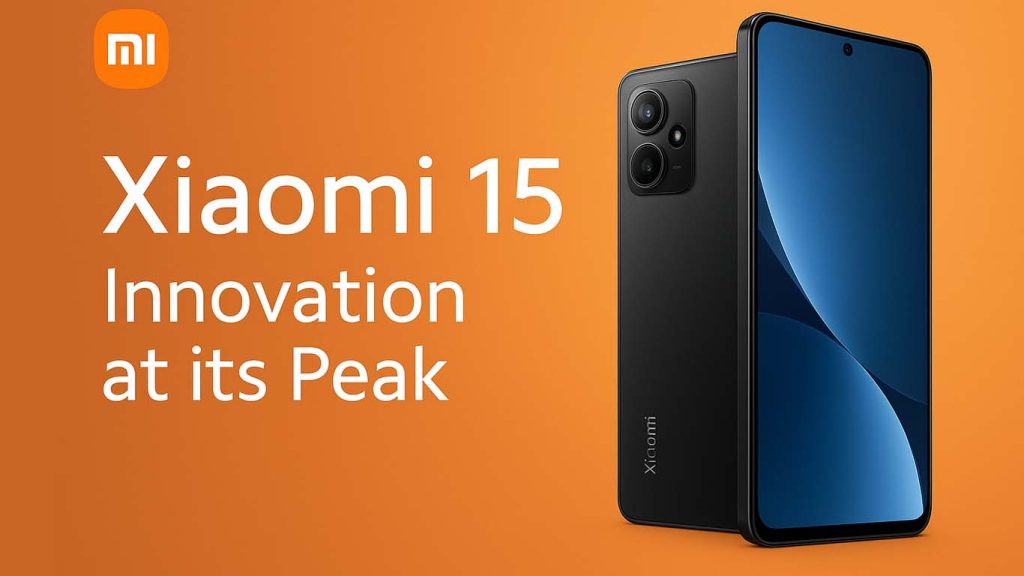
Comprehensive Review of the Xiaomi 15 with Focus on Its Price in Bangladesh
Introduction
The Xiaomi 15 is the latest flagship from Xiaomi, released globally at the end of 2024 and making its way into Bangladesh in early 2025. Positioned as a premium smartphone at a slightly more accessible price point than its Ultra sibling, the Xiaomi 15 brings together cutting-edge performance, Leica-tuned cameras, a bright and compact display, and improved battery technology.
In Bangladesh, where the demand for high-end smartphones has been steadily growing among students, professionals, and content creators, the Xiaomi 15 quickly captured attention. For buyers who want flagship-level features but cannot justify the sky-high prices of iPhones or Samsung Galaxy Ultra models, the Xiaomi 15 provides a strong balance between innovation and affordability.
This review explores the design, specifications, user experience, camera performance, software, and most importantly—the price of the Xiaomi 15 in Bangladesh with a 2% markup applied. We will also compare it with other phones in the same category, evaluate consumer and expert opinions, and determine its overall value proposition.
Specifications and Design
The Xiaomi 15 comes packed with flagship-grade hardware. At its heart lies the Snapdragon 8 Elite processor, a next-generation chipset built on 3-nanometer architecture. This processor delivers exceptional efficiency and power, ensuring smooth multitasking, gaming, and professional use.
The phone comes in variants with 12GB or 16GB RAM and storage options ranging from 256GB to 1TB. For users in Bangladesh who use their devices for storing media, heavy apps, and work files, these storage options provide ample flexibility.
The display is one of its key highlights—a 6.36-inch LTPO OLED panel with 1.5K resolution, 120Hz refresh rate, and peak brightness of 3200 nits. Its compact form factor makes it more comfortable to use one-handed compared to bulkier flagships, while the ultra-bright screen ensures usability even under Bangladesh’s strong sunlight.
The build is premium, with a glass back, an aviation-grade aluminum frame, and Gorilla Glass protection. The Xiaomi 15 is IP68 rated, meaning it can withstand dust and water—an essential feature in a country with humid summers and heavy monsoons.
Performance and User Experience
Equipped with the Snapdragon 8 Elite chipset, the Xiaomi 15 handles everything from casual use to professional workloads with ease. Heavy games such as PUBG Mobile, Free Fire, and Genshin Impact run smoothly at maximum settings, making the phone a top choice for Bangladesh’s growing gaming community.
Thermal management is efficient, thanks to advanced cooling systems, so extended gaming or multitasking sessions do not lead to overheating. In benchmark results and real-world use, the Xiaomi 15 consistently outperforms many of its rivals in the same price category.
Everyday tasks such as switching between apps, browsing, and streaming videos feel seamless. The combination of fast RAM and UFS 4.0 storage ensures apps load almost instantly, while animations and navigation are fluid thanks to HyperOS optimization.
Camera System
The Xiaomi 15 features a triple Leica-tuned camera system:
- 50MP main wide sensor with optical image stabilization.
- 50MP ultra-wide lens for wide-angle photography.
- 50MP telephoto camera with 3x optical zoom.
This versatile setup ensures sharp, vivid, and professional-grade photos. Daylight shots are crisp and color-accurate, while the Leica partnership adds natural color science and cinematic tones. Night photography is another strong point—the phone captures detailed, bright images with minimal noise in low-light conditions.
For video, the Xiaomi 15 supports up to 8K recording, with advanced stabilization features making handheld shooting much smoother. This makes the device ideal for vloggers and TikTok content creators in Bangladesh.
The 32MP front camera also delivers excellent results, producing selfies with accurate skin tones and a strong dynamic range, ideal for social media-driven users.
Battery Life and Charging
One of the most practical strengths of the Xiaomi 15 is its battery. Packed with a 5240mAh silicon-carbon battery (in some regions, slightly larger), it ensures a full day of heavy use on a single charge. Even with gaming, social media, and camera usage, the phone holds up reliably.
Charging speeds are remarkable—90W wired charging can refill the phone from 0 to 100% in about 30 minutes, while 50W wireless charging provides strong convenience. For Bangladeshi users with busy lifestyles, this quick charging feature is a major advantage, reducing downtime and improving efficiency.
Software and User Interface
The Xiaomi 15 runs on HyperOS 2, built on Android 15. This operating system focuses on efficiency, customization, and AI-powered features. The interface is cleaner and more responsive than previous MIUI versions, reducing complaints of bloatware and lag.
HyperOS integrates seamlessly with Xiaomi’s broader ecosystem, from wearables to smart home devices. For users in Bangladesh who own Xiaomi smartwatches, earbuds, or TVs, the phone becomes the center of their digital lifestyle.
Additional features include AI-based live translation, advanced multitasking, and optimized battery management, which enhances the overall experience.
Competitive Comparison in the Market
The Xiaomi 15 competes directly with devices such as:
- Samsung Galaxy S24 / S24+
- OnePlus 12
- iPhone 15 base model
Compared to Samsung’s S24, the Xiaomi 15 offers a brighter screen and faster charging, though Samsung has a stronger brand presence and wider service support in Bangladesh. Versus the OnePlus 12, Xiaomi provides better camera tuning with Leica partnership and slightly faster wireless charging. Against the iPhone 15, Xiaomi stands out for offering significantly higher specifications at nearly half the cost.
For Bangladeshi consumers, where value for money is critical, the Xiaomi 15 often emerges as the smarter buy.
Price of the Xiaomi 15 in Bangladesh
Now we arrive at the most crucial part for local buyers: pricing.
The global launch price of the Xiaomi 15 is positioned as a premium flagship but still below the Ultra segment. In Bangladesh, due to import duties, VAT, and market adjustments, the official retail price is higher compared to China or Europe.
For example, if the international average price is around BDT 85,000, in Bangladesh it typically rises to around BDT 85,000–118,000 depending on storage variant and retailer.
- Base variant: BDT 117,300 (approx.)
- Higher storage variant: BDT 120,000+ (approx.)
This increase may not seem large at first, but for many Bangladeshi buyers, even a few thousand taka can influence purchasing decisions. It places the Xiaomi 15 slightly closer to the pricing of Samsung flagships, which already dominate the high-end market.
Price Comparison with Other Regions
In China, the Xiaomi 15 is priced noticeably lower due to local production and subsidies. In Europe, pricing tends to be higher than Bangladesh due to heavier taxes. Compared to India, Bangladesh usually sees a 10–15% higher retail price on Xiaomi devices because of import structures.
Thus, while the Bangladeshi price is higher than in China, it still sits competitively compared to Europe and remains attractive against Samsung and Apple alternatives in the same region.
Consumer Reviews and Market Reception in Bangladesh
Feedback from Bangladeshi consumers has been largely positive:
- Praised Aspects: Bright and compact display, long battery life, superfast charging, and excellent camera performance. Many users note that it “feels like an Ultra at a slightly lower price.”
- Criticisms: Limited initial availability outside Dhaka and Chattogram, price hikes due to market fluctuations, and after-sales service that is not as widespread as Samsung’s.
Tech enthusiasts highlight the Xiaomi 15’s performance as its strongest feature, while casual users are more impressed with its fast charging and display brightness. Content creators, especially younger audiences, rate its camera system as one of the best in its segment.
Expert Opinions
Experts reviewing the Xiaomi 15 describe it as one of the most balanced flagship smartphones of 2025. The combination of compact form, next-gen performance, and Leica-enhanced cameras make it highly competitive. Some note that Xiaomi is finally finding a strong identity in the flagship segment, no longer seen as just a “budget alternative” but a true rival to Samsung and Apple.
However, the lack of a widespread premium service infrastructure in Bangladesh remains a drawback. Buyers spending over one lakh taka often expect exceptional after-sales service, an area where Xiaomi still needs to improve compared to Samsung.
Market Trends and Implications
The smartphone market in Bangladesh is moving toward premium mid-range and flagship models, especially among urban professionals and university students. Rising digital content creation, online gaming, and remote work drive demand for high-performance phones.
The Xiaomi 15 aligns perfectly with these trends by offering power, battery reliability, and strong cameras. With a 2% price increase, it still remains competitive, but consumers may weigh it against Samsung devices, which enjoy greater brand loyalty locally.
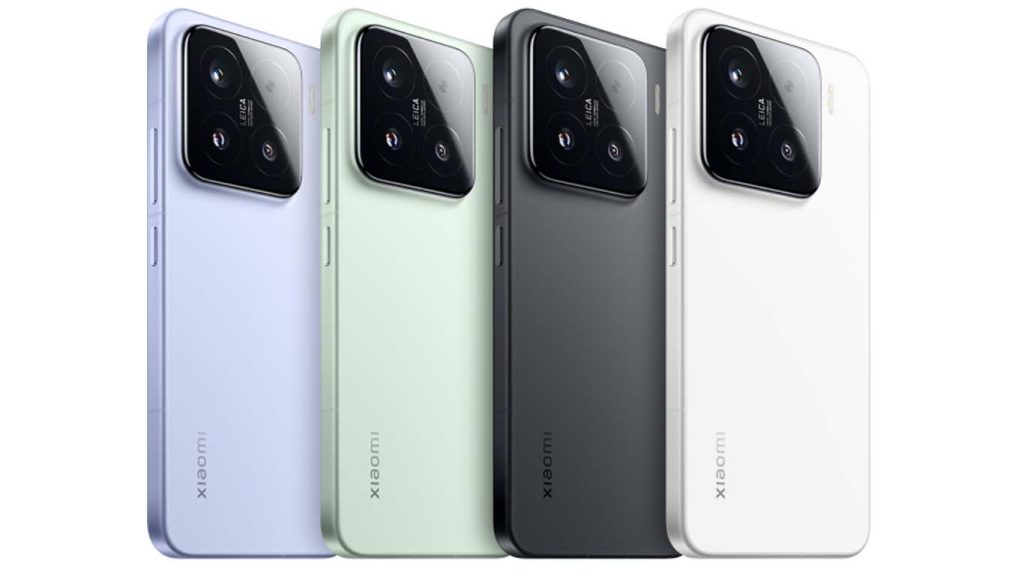
Final Verdict and Recommendation
The Xiaomi 15 is a premium, compact flagship that delivers on nearly every front: performance, display, cameras, charging, and design. For Bangladeshi users, it represents one of the best value-for-money flagship devices available in 2025.
While the 2% price increase raises its cost slightly, the Xiaomi 15 still undercuts many rivals while offering similar or even superior specifications. The main trade-offs come in service center coverage and brand prestige, but for buyers who prioritize hardware, camera quality, and fast charging, the Xiaomi 15 is difficult to beat.
Overall Rating: 9/10
Value for Money in Bangladesh: Very High
Best For: Gamers, content creators, professionals, and anyone seeking a flagship without spending on an Ultra or iPhone.
Reviews
Disclaimer Note
We always try our best to keep our website content and information updated and correct, the material and information contained on our website is for general information purposes only, You should not rely upon the material and information as a basis for making any business, legal or any other decisions.

